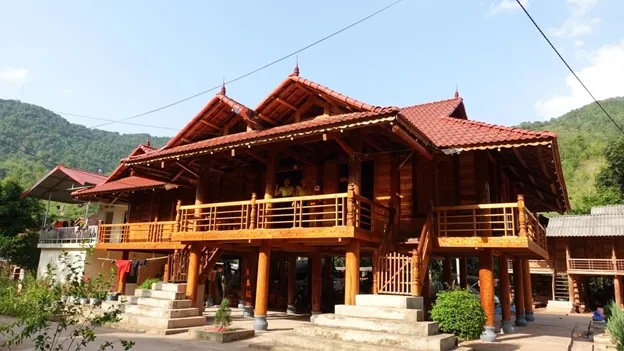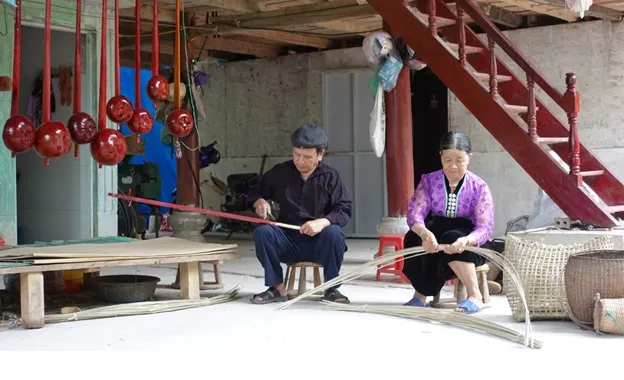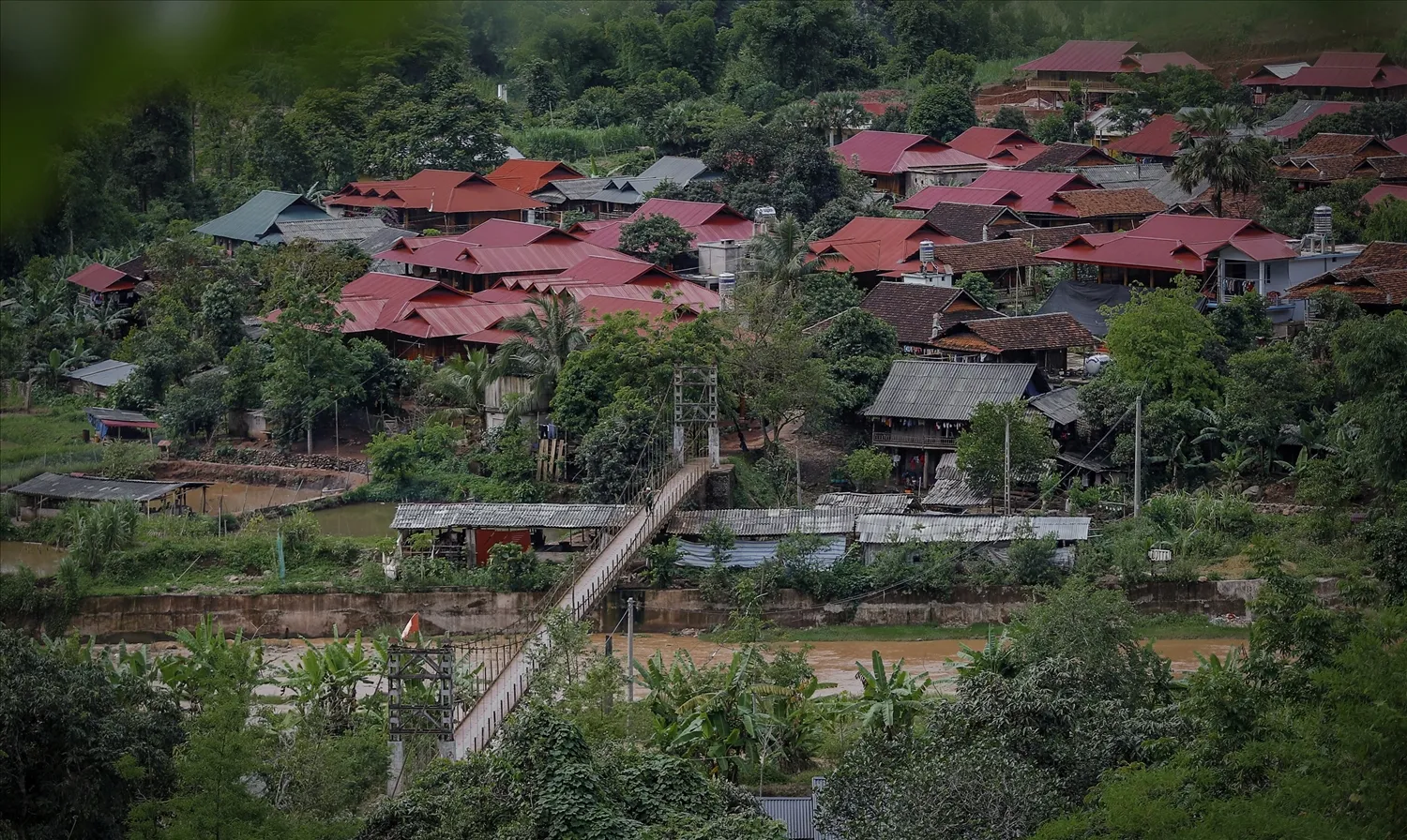Dien Bien, a land where 19 ethnic groups converge, each with its own distinct culture, contributes to the colorful tapestry of this region. Among them, the Thai people constitute a significant portion of the population and have developed unique cultural traits, clearly expressed in the saying, “Eat sticky rice, drink can wine, wear xửa cóm, live in stilt houses.” These traditional stilt houses are not merely shelters from the elements but also cultural symbols, the soul of the Thai people in Northwest Vietnam.

Unique Features of Thai Stilt House Architecture
Thai stilt houses are not just architectural structures; they are the embodiment of the culture, history, and living philosophy of the community. The houses are built from natural materials such as wood, bamboo, nứa, rattan, straw, and grass, creating harmony with nature.
Preparing the wood is the most important and labor-intensive step. The wood must be of good quality, durable in the natural environment, and capable of bearing heavy loads. Wood is commonly used for columns, beams, girders, horizontal beams, and crossbeams – the most crucial structural components of the house. Wood for columns is usually from large trees, felled in the winter to prevent termites and ensure the house’s stability.

For beams and girders, lighter woods, less hard than column wood but absolutely termite-resistant, can be chosen. The work of harvesting and transporting wood requires the cooperation of individuals within the village community. It is during this preparation process that the spirit of mutual love, mutual assistance, and community support among the Thai people is clearly demonstrated. This is an integral part of Thai culture, reflecting community cohesion and solidarity.
Variations in Stilt House Design Among Thai Groups
According to Mr. Thung Van Doi from Na An 2 village, Cha Nua commune, Nam Po district (Dien Bien): “Each Thai ethnic group, or each region, has its own custom of building houses, but overall, the architecture and structure of the houses are similar. If the stilt houses of the White Thai people have 4 flat roofs, then the houses of the Black Thai people have curved, turtle-shell-shaped roofs with ‘khau cut’ ornaments at both ends of the roof ridge.”

This difference reflects the diversity in Thai culture and shows their adaptation to different living environments and natural conditions. Despite these variations, all Thai stilt houses share common features that represent the cultural identity of the ethnic group.
Beliefs Regarding the Number of Bays and Steps
The Thai people believe that lucky numbers are odd, so houses usually have 3 or 5 bays, and wealthy houses may have 7 bays. The total number of windows and main doors must also be odd. The two staircases at either end of the house also have an odd number of steps: 7, 9, 11, or 13.
The house is divided into 3 levels: the first level is the space under the floor, used for storing firewood and farm tools; the second level is the floor surface, the living area for the family; and the third level is the attic, used for storing valuable items. This arrangement reflects a scientific approach to using living space and embodies the cultural values and beliefs of the Thai people.
Preserving and Promoting the Cultural Values of Stilt Houses
Mr. Thung Van Anh, Chairman of the People’s Committee of Cha Nua commune, Nam Po district, stated: Cha Nua commune has 6 villages, 5 of which are inhabited by Thai people who have settled here for a very long time. To adapt to social development, Thai stilt houses are also undergoing many changes, with more modern designs and diverse materials. The concepts of house construction and the arrangement of living spaces are no longer strictly traditional to suit modern life. However, many traditional Thai houses in Cha Nua commune are still being preserved intact by the villagers…

“The commune authorities also regularly educate the villagers to limit the use of reinforced concrete in building stilt houses to protect and promote the good values of stilt houses left by our ancestors,” Chairman Thung Van Anh added. This demonstrates the local authorities’ concern for preserving and promoting the cultural values of Thai stilt houses.
Stilt Houses – Cultural Highlights in Northwest Tourism
Thai stilt houses in Northwest Vietnam are not just homes but also an important part of local tourism culture. Tourists visiting the Northwest often seek out Thai villages to experience the life, learn about the culture, and admire the unique stilt houses.
Stilt houses have become a distinctive tourism product, contributing to promoting the image of the Northwest to domestic and international tourists. Preserving and promoting the cultural values of stilt houses not only helps the Thai people maintain their cultural identity but also creates opportunities for economic development through tourism.
Thai stilt houses in Northwest Vietnam are a precious cultural heritage that needs to be preserved and promoted. They are not just shelters but also symbols of cultural identity, the pride of the Thai people. Preserving and promoting the cultural values of stilt houses will contribute to enriching the diverse cultural landscape of Vietnam.